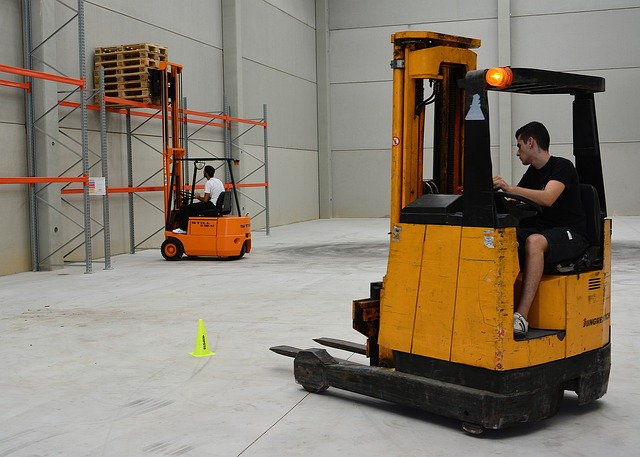Sirpa Sandelin, TkT, Yliopettaja; Kari Lilja, TkT, Erikoistutkija
English version: Click the link
Kesätyöpaikkojen haku on meneillään ja nuoret odottavat innokkaina valituksi tulemista ja uusia tehtäviä. Mutta onko työnantajalla perehdytyskäytännöt hallussaan? Otsikon mukainen lausahdus on viime heinäkuulla kauppareissulla puhelinkeskustelusta kuultu. Selkeästi keskustelijoina olivat yrityksen johdon edustajat. Teki mieleni kysyä, että mitä? Lait ja asetuksethan sääntelevät sekä työnantajan että työntekijän velvollisuuksia, joihin sisältyy myös perehdytyksen laaja kokonaisuus. Mitä eroa on kunnon perehdytyksellä ja ei-kunnon perehdytyksellä? Tulkitaanko ei-kunnon perehdytys niin, että perehdytystä ei ole lainkaan, vai annetaanko työväline käteen ja sanotaan, että tuossa on kone? Uskaltaako perehdytettävä kysyä tällaisessa tilanteessa mitään? Tuskin.

Sekä työnantajalla että työntekijällä on lakisääteisiä velvollisuuksia. Työturvallisuuslaki (738/2002) määrittelee työnantajan yleiset velvollisuudet, joista 14 § (Työntekijälle annettava opetus ja ohjaus) sääntelee perehdytystä seuraavasti:
- ”työntekijä perehdytetään riittävästi työhön, työpaikan työolosuhteisiin, työ- ja tuotantomenetelmiin, työssä käytettäviin työvälineisiin ja niiden oikeaan käyttöön sekä turvallisiin työtapoihin erityisesti ennen uuden työn tai tehtävän aloittamista tai työtehtävien muuttuessa sekä ennen uusien työvälineiden ja työ- tai tuotantomenetelmien käyttöön ottamista;
- työntekijälle annetaan opetusta ja ohjausta työn haittojen ja vaarojen estämiseksi sekä työstä aiheutuvan turvallisuutta tai terveyttä uhkaavan haitan tai vaaran välttämiseksi;
- työntekijälle annetaan opetusta ja ohjausta säätö-, puhdistus-, huolto- ja korjaustöiden sekä häiriö- ja poikkeustilanteiden varalta; ja
- työntekijälle annettua opetusta ja ohjausta täydennetään tarvittaessa”.
Yleisiä velvollisuuksia on täsmennetty Työturvallisuuslaissa siten, että työntekijän henkilökohtaiset edellytykset suoriutua työstä on otettava huomioon opetusta ja ohjausta annettaessa. Asetukset antavat tarkemmat ohjeet mm. työpaikkojen turvallisuus- ja terveysvaatimuksista ja rakennustyön turvallisuudesta. Myös Työsopimuslain (55/2001) 2 luvun (Työnantajan velvollisuudet) 1 § (Yleisvelvoite) ja 3 § (Työturvallisuus) määrittelevät mistä työantajan on huolehdittava.

Työntekijällä on vastaavasti omat velvollisuutensa., Työsopimuslain (55/2001) 3 luvun (Työntekijän velvollisuudet) 1 § (Yleiset velvollisuudet) ja 2 § (Työturvallisuus) mukaan työntekijän on noudatettava työnantajan määräyksiä ja huolehdittava niin omasta kuin muidenkin työntekijöiden työturvallisuudesta. Työturvallisuuslain (738/2002) 4 luku (Työntekijän velvollisuudet ja oikeus työstä pidättäytymiseen) sääntelee useita perehdytykseen liittyviä tekijöitä.
Olen luennoinut useita vuosia työyhteisövalmiuksien kursseja, joissa perehdytyksellä on oma roolinsa. Työyhteisövalmiudet on opintojakso, jonka sisällön opiskelija tulkitsee osaavansa, kun on ollut kesätöissä. Opintojakso ei tunnu kiinnostavan ollenkaan! Onko sitten kysymys opintojakson nimestä, joka ei kuvaa todellista sisältöä riittävän laajasti vai kauhistuttaako työelämän sääntöjen pohjautuminen lainsäädäntöön? Opiskelijat eivät esim. ymmärrä, että toimiessaan työpäällikkönä heidän vastuunsa ulottuu koko työmaan etenemiseen. Pahimmassa tapauksessa seinäelementin putoaminen ja alihankkijan työtekijän menehtyminen johtaa siihen, että työpäällikkö löytää itsensä käräjiltä muiden vastuuhenkilöiden kanssa. Korvaussummat ovat suuria ja päälle tulevat vielä oikeudenkäyntikulut ja yhteisösakko. Korvaussumma tuomitaan yleensä yhteisvastuullisesti, jolloin korvaus käytännössä peritään niiltä, joilta se saadaan, ja näille syntyy sitten regressi- eli takautumisoikeus muita korvausvelvollisia kohtaan. Regressioikeus tarkoittaa, että enemmän maksaneilla on oikeus periä ”liikaa” maksamansa osuus korvauksesta muilta. Tämä yleensä johtaa pitkiin ja riitaisiin velka- ja perintäkierteisiin.
Olen myös ohjannut useita perehdytystä käsitteleviä opinnäytetöitä. Ne on aloitettu, kun toimeksiantaja on havainnut, että perehdytysprosessit eivät ole yrityksessä yhtenäiset tai ylipäätään mitenkään dokumentoitu. Eräässä isohkossa yrityksessä perehdytyksen sisältö riippui siitä, kenen tiimiin uusi tulokas sijoittui. Yrityksessä oli kymmenkunta erilaista tapaa hoitaa perehdytys. Opinnäytetyössä laadittiin yhtenäinen käytäntö, jonka pohjalta jokainen uusi työntekijä saa tarvittavan perehdytyksen samanlaisesti toteutettuna.

Perehdytys yritykseen alkaa useimmiten jo siinä vaiheessa, kun työpaikkaa haetaan. Harva yritys tai työpaikan hakija tosin niin ajattelee. Hakija perehtyy netin avulla tulevan työpaikkansa asioihin. Viimeistään haastattelussa kysytään yrityksen toiminnasta, henkilöstöstä tai talousluvuista. Hakijan on syytä valmistautua näihin kysymyksiin, sillä ne mittaavat hakijan todellista kiinnostusta yrityksessä työskentelyyn. Entä jos nettisivuja ei ole? Netistä löytää virallista tietoa yrityksistä, jos hakee esim. Yritys- ja yhteisötietojärjestelmästä (www.ytj.fi) tai Finderista (www.finder.fi). Työturvallisuuskeskuksen (www.ttk.fi) sivuilta löytyy ohjeita perehdytykseen.
Varsinainen perehdytys alkaa viimeistään siinä vaiheessa, kun työsopimusta laaditaan. Työsuhteen pituus ei vaikuta työntekijän oikeuteen saada perehdytystä. Oli kyseessä sitten toistaiseksi voimassa oleva sopimus, määräaikainen sopimus tai keikkatyö, perehdytys kuuluu kaikkiin työsuhteen muotoihin. Yritykset voivat antaa mapillisen materiaalin tai nykynuorelle paremmin sopivan nettiaineiston etukäteen tutustuttavaksi. Useilla toimialoilla on alakohtaisia ePerehdytyskursseja (esimerkiksi https://rateko.fi/ekoulutus/eperehdytys/), joista esim. rakennusalan ePerehdytys antaa perehdytyksen yleisistä työturvallisuusasioista. Tämän lisäksi rakennusalalla löytyy ePerehdytyksiä mm. telinetyöskentelyyn, kosteudenhallintaan ja kierrätykseen. Rakennusala on poikkeuksellinen perehdytyksen suhteen, sillä lukuisat urakkamuodot, vaadittavat koulutukset, pätevyydet, yksittäisten työmaiden olosuhteet ja monikansallinen työvoima asettavat perehdytykselle omat vaatimuksensa.
Lähiesihenkilö tai isommissa yrityksissä henkilöstöyksikkö laatii perehdytyssuunnitelman, jonka toteutumista myös seurataan. Perehdytettävän on hyvä osallistua suunnitelman laadintaan, varsinkin jos pätevyyksien hankkiminen, ylläpito tai todentaminen on hoitamatta. Joissakin yrityksissä on yleisperehdyttäjiä, jotka opastavat yrityksen sääntöihin, kulttuuriin, toimintatapoihin, järjestelmiin, työsuhdeasioihin, jne. Varsinaisen työhön perehdyttämisen hoitaa joko esihenkilö tai tiimistä nimetty henkilö. Työtehtäviin perehdytyksessä käydään läpi työvälineet, laitteet, turvallisuusohjeet, henkilösuojaimet, jne. tehtävien edellyttämässä laajuudessa. Perehdytyksen syvyys riippuu työntekijästä, hänen henkilökohtaisista edellytyksistään, koulutuksestaan, työkokemuksestaan ym. Vaikka tehtävät olisivat työntekijälle tuttuja edellisestä työpaikasta, tulee perehdytyksen sisältää uuden työnantajan toimintatavat ja -käytännöt. Kullakin yrityksellä on omat tavat ja prosessit, joten perehdytys on hoidettava yritys- ja tehtäväkohtaisesti. Jos työtehtävissä ja kohteissa tapahtuu muutoksia tai työmenetelmät tai -materiaalit muuttuvat, on perehdytys tehtävä niiltä osin uudestaan. Perehdytysmateriaali päivitetään tai uusitaan aina kun jokin asia muuttuu.

Perehdytys ei ole kertaluonteinen operaatio vaan jatkuva toiminto, jolla vahvistetaan yrityksen vastuullista toimintaa, työntekijöiden sitouttamista ja työhyvinvointia. Työnantajilla ja työntekijöillä on molemmilla merkittävä rooli perehdytyksen jatkuvassa kehittämisessä. Perehdyttäminen vaatii aikaa ja joskus kärsivällisyyttäkin, mutta hyvin hoidettuna se on kannattava sijoitus, joka toimii myös positiivisena imagon kohottajana.
Työturvallisuuslaki 738/2002, https://www.finlex.fi/fi/laki/ajantasa/2002/20020738
Työsopimuslaki 55/2001, https://www.finlex.fi/fi/laki/ajantasa/2001/20010055
English version
”He wants a proper orientation…”
The search for summer jobs is underway and young people are eagerly waiting for hiring and new tasks. But does the employer have the orientation practices? The statement in the title was overheard in a phone conversation last July on a shopping trip. The representatives of the company’s management were clearly the conversationalists. It made me want to ask what? After all, laws and regulations regulate the obligations of both the employer and the employee, which also include the broad scope of orientation. What is the difference between a proper orientation and a not-so-proper orientation? Is a poor orientation interpreted as no orientation at all, or is a work tool handed to the hand and told that there is a machine in it? Does the trainee dare to ask anything in such a situation? Hardly.

Both the employer and the employee have statutory obligations. The Occupational Safety and Health Act (738/2002) defines the employer’s general obligations, of which Section 14 (Employee training and guidance) regulates orientation as follows:
1) ”the employee is adequately familiarized with the work, the working conditions of the workplace, work and production methods, work tools used at work and their correct use and safe work practices, especially before starting a new job or task or when work tasks change and before introducing new work tools and work or production methods,
2) the employee is given education and guidance to prevent the disadvantages and dangers of work and to avoid harm or danger that threatens safety or health caused by work,
3) the employee is given training and guidance in case of adjustment, cleaning, maintenance, and repair work as well as disturbances and exceptional situations, and
4) the teaching and guidance given to the employee is supplemented if necessary”.
The general obligations have been specified in the Occupational Safety and Health Act so that the employee’s personal conditions to perform the job must be considered when giving instruction and guidance. The settings give more detailed instructions, e.g. about the safety and health requirements of workplaces and the safety of construction work. Also, Section 1 (General Obligation) and Section 3 (Occupational Safety) of Chapter 2 (Obligations of the Employer) of the Employment Contracts Act (55/2001) define what the employer must take care of.

The employee has his own responsibilities accordingly. According to Chapter 3 (Employee’s Responsibilities) § 1 (General Responsibilities) and § 2 (Occupational Safety) of the Employment Contracts Act (55/2001), the employee must comply with the employer’s regulations and take care of his own and other employees’ occupational safety. Chapter 4 of the Occupational Safety and Health Act (738/2002) (Employee’s obligations and right to abstain from work) regulates several factors related to orientation.
For several years, I have been lecturing courses on working community readiness, where orientation has its own role. Working community skills is a study course, the content of which the student interprets as being able to, after having worked in the summer. The course doesn’t seem interesting at all! Is it a question of the name of the study course, which does not describe the real content in a sufficiently broad way, or is it appalling that the rules of working life are based on legislation? Students do not understand, for example, that when acting as a work manager, their responsibility extends to the progress of the entire construction site. In the worst case, the fall of a wall element and the death of a subcontractor’s worker will lead to the supervisor finding himself been taken to the court together with other persons responsible for the case. The compensation amounts are large, and on top of that there are court costs and a community fine. The compensation amount is usually judged jointly and severally, in which case the compensation is in practice collected from those from whom it can be collected, and they then have a right of recourse against other parties liable for compensation. The right of recourse means that those who have paid more have the right to collect the ”excess” part of the compensation from others. This usually leads to long and contentious spirals of debt and collection.
I have also supervised several theses dealing with orientation. They have been started when the customer has noticed that the orientation processes in the company are not uniform or not documented in any way at all. In one large company, the content of the orientation depended on whose team the newcomer was placed on. The company had a dozen different ways of handling orientation. In the thesis, a unified policy was drawn up, based on which every new employee receives the necessary orientation, implemented in a similar way.

Orientation to the company usually starts already at the stage when applying for a job. However, few companies or job applicants think so. The applicant familiarizes himself with the issues of his future workplace using the internet. At the end of the interview, questions are asked about the company’s operations, personnel, or financial figures. The applicant should prepare for these questions, as they measure the applicant’s real interest in working in the company. What if there is no website? You can find official information online if you search, for example, in the Business Information System (www.ytj.fi) or Finder (www.finder.fi). Instructions for orientation can be found on the website of The Centre for Occupational Safety (www.ttk.fi).
The actual induction starts at the latest when the employment contract is drawn up. The length of employment does not affect the employee’s right to receive training. Whether it’s an open-ended contract, a fixed-term contract or gig work, orientation is part of all forms of employment. Companies can give out pre-made material or online material that is more suitable for today’s youth. Several industries have sector-specific eOrientation courses (for example https://rateko.fi/ekoulutus/eperehdytys/), of which e.g., eOrientation for the construction industry introduces general occupational safety issues. In addition to this, there are eOrientation courses for the construction industry covering, e.g., scaffolding, moisture management, or recycling. The construction industry is exceptional when it comes to orientation, due to the numerous types of contracts, the required training, qualifications, the conditions of individual construction sites, and the multinational workforce, that each impose their own requirements on orientation.
In onsite orientations, supervisor or, in larger companies, the personnel unit prepares an orientation plan, the implementation of which is also monitored. It is good for the person to be trained to participate in the preparation of the plan, especially if the acquisition, maintenance, or verification of qualifications has not been taken care of. Some companies have general orientation staff who provide guidance on the company’s rules, culture, operating methods, systems, labour relations issues, etc. The actual orientation to the job is handled by either a superior or a designated person from the team. Work tools, equipment, safety instructions, personal protective equipment, etc. are reviewed in the orientation to work tasks to the extent required by the tasks. The depth of the induction depends on the employee, his personal requirements, education, work experience, etc. Even if the duties are familiar to the employee from the previous workplace, the induction must include the operating methods and practices of the new employer. Each company has its own culture, customs, and processes, thus, orientation must be handled company- and task-specific. If there are changes in work tasks and targets or the work methods or materials change, the orientation must be done again in those respects. The training material is updated or renewed whenever something changes.

Orientation is not a one-time operation, but a continuous function that strengthens the company’s responsible operation, employee commitment and well-being at work. Employers and employees both play a significant role in the continuous development of orientation. Familiarization requires time and sometimes patience, but if managed well, it is a profitable investment that also serves as a positive image enhancer.
Occupational Safety And Health Act
Artikkeli on kirjoitettu Euroopan unionin rahoittamien BA&VET, Easy Energy, WIN4SMEs, ja Wood for Youth -hankkeiden puitteissa. Vastuu artikkelissa esitetyistä näkemyksistä on yksinomaan kirjoittajilla.
This article was written in the framework of the projects BA&VET, Easy Energy, WIN4SMEs, and Wood for Youth, funded by the European Union. The sole responsibility for the views expressed in this article lies with the authors.

